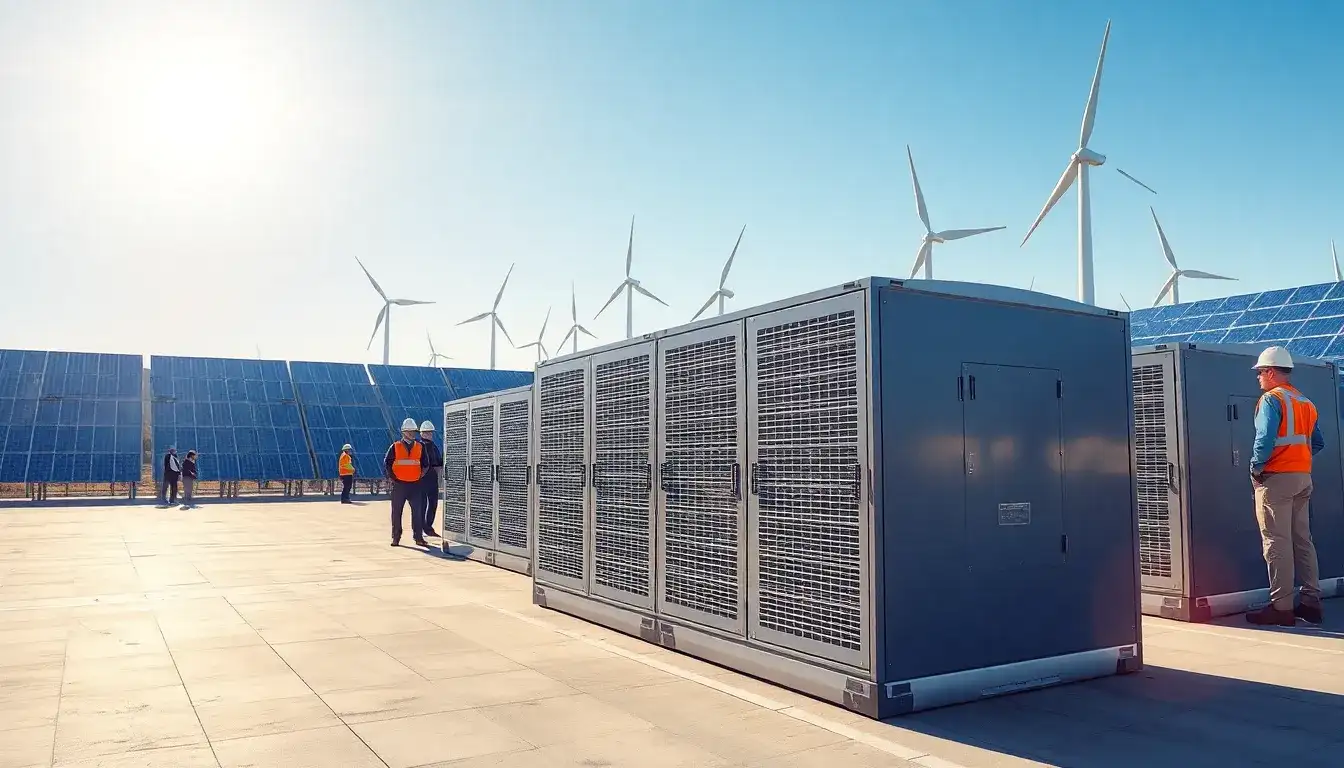
As the cost of lithium batteries declines and investments lead to new innovations and battery types, the likelihood that batteries will address the grid-scale storage challenge is increasing. While wind, solar, and wave energy often dominate discussions about the energy transition, energy storage is a vital component in the shift toward greener energy sources. Unlike fossil fuel generation, renewable energy is intermittent; it is available when the wind blows and the sun shines, sometimes in excess, but can also significantly drop during unfavorable weather conditions. National grids require a method to store surplus power when it is generated, allowing for release during periods of lower renewable productivity to maintain grid balance.
The solution to this challenge lies in batteries. However, current battery capacity and capabilities fall short of what is needed. According to the International Energy Agency, to achieve net-zero emissions by 2050, global energy storage capacity must increase sixfold to 1,500 GW by 2030, with batteries contributing 90% of that increase—an expansion to 1,200 GW, which includes both utility-scale and behind-the-meter storage.
In the past 15 years, battery costs have plummeted by over 90%, marking one of the fastest declines in clean energy technologies. Lithium-ion batteries have become the most prevalent type due to their high energy density, notably in nickel-cobalt-aluminium (NCA) and nickel-manganese-cobalt (NMC) variants. Companies are also exploring alternatives such as lithium-sulfur and solid-state batteries for their energy density, while sodium-ion batteries are being considered as a safer and more cost-effective option, despite their lower energy density.
However, grid-scale storage encompasses much more than just batteries; it requires complex systems capable of real-time energy monitoring, managing flow, and balancing grid loads. Without advanced solutions in place, the adoption of renewables may hit a bottleneck as the grid becomes increasingly dependent on them.
Grid-scale battery deployment faces two significant challenges: market overcapacity and investment difficulties. Bain & Company estimates that the market for grid-scale storage could grow from approximately $15 billion in 2023 to between $200 billion and $700 billion by 2030, and potentially reach $1 trillion to $3 trillion by 2040. However, the rush to capture market share has resulted in overcapacity, leading to declining prices. China, the world’s battery production leader, is already manufacturing enough lithium batteries to meet global demand and has announced plans for an additional 5.8 terawatt-hours (TWh) of capacity by 2025—more than double the current global capacity of 2.6 TWh. This situation will intensify competition, leaving those who can wait for demand to align with supply in a stronger position. A viable path for battery companies is to focus on niche markets with innovative technologies, such as sodium-ion or solid-state solutions.
Despite the supply-demand dynamics, securing investment for individual grid-scale storage projects remains challenging. These projects typically require a long-term commitment, often spanning 20 years or more, including battery upgrades. According to EY, such projects are highly localized and inherently riskier than some other clean energy investments. Success necessitates a thorough understanding of regional variations, electricity market design, technology, and financing, along with an acceptance of volatility. Many projects adopt a co-location financing model, placing batteries alongside renewable power generators to benefit from the more stable revenues associated with renewable energy. However, both renewable energy and the storage projects tied to it are inherently more volatile. The emergence of negative energy prices has highlighted the complexities of scenario planning for a sector that is influenced by both weather patterns and the political landscape surrounding sustainability.
A critical factor favoring grid-scale storage is its necessity. Energy demand continues to rise, and even if countries were to abandon the goal of achieving net-zero emissions by 2050, renewable energy will still be essential to meet this demand. Additionally, major technology companies are keen to power their expanding data centers with clean energy.
In summary, while challenges lie ahead, the momentum toward grid-scale battery storage is undeniable, driven by both necessity and opportunity.
Original article by NenPower, If reposted, please credit the source: https://nenpower.com/blog/batteries-poised-to-revolutionize-grid-scale-energy-storage-solutions/


